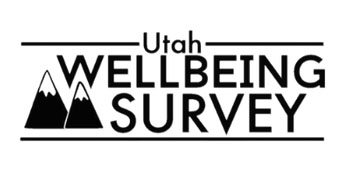LOGAN – Looking back on the past year, the majority of Logan residents say that their personal and community wellbeing were adversely impacted by effects of the coronavirus pandemic.
That’s the unsurprising conclusion of the local portion of a statewide Utah Wellbeing Survey Project conducted by the Utah State University Extension Service.
“Logan is one of 30 cities currently participating in the Utah Wellbeing Survey Project,” according to project head Dr. Courtney Flint of the USU Department of Sociology, Social Work and Anthropology. “This project is designed to assess the wellbeing and local perspectives of city residents and to provide that information to city leaders to inform their general planning process.”
The survey found that 53 percent of Logan residents felt that their personal wellbeing had declined during 2020 and 61 percent believed that their community’s wellbeing also declined during that period.
Those results put Logan’s overall perception of personal and community wellbeing below the average of the other 29 Utah cities participating in the USU survey.
For example, Hyde Park residents gave themselves the state’s highest scores for personal and community wellbeing. Only 35 percent of Hyde Park residents felt that their personal wellbeing had declined due to the coronavirus and 31 percent agreed that community wellbeing had also declined.
In North Logan, declining personal wellbeing was reported by 38 percent of residents and declining community wellbeing was cited by 41 percent of residents.
In Nibley, 39 percent of survey respondents reported a decline in personal wellbeing and another 41 percent felt that community wellbeing had declined.
The statewide wellbeing survey has been in progress since 2019, but only 131 of Logan’s more than 38,000 residents replied to that initial round of polling. By contrast, 563 local residents responded to the online survey posted during January and February of 2021.
That response rate represents 1.5 percent of Logan’s adult population, Flint reported, giving the survey findings a conservative margin of error of 4.1 percent.
Optional demographic questions on the survey indicated that 96.6 percent of survey respondents were full-time residents of Logan.
But Flint acknowledges that the survey respondents were not fully representative of Logan’s population. College-educated married women who had children and owned their own homes were over-represented among survey respondents. Young adults aged 18 to 29 with annual incomes under $25,000 were particularly under-represented.
Despite those shortcomings, the survey responses from all demographic groups indicated that Logan residents felt that the coronavirus pandemic had the greatest impact on social connections, cultural opportunities and mental health during 2020.
The wellbeing survey’s questions also invited Logan residents to look to the future. Their responses indicated that their top concerns for coming decades were air quality (cited by 85 percent of respondents as a moderate or major concern), affordable housing (79 percent), employment opportunities (68 percent), transportation infrastructure (65 percent), youth opportunities (63 percent) and water supplies (62 percent).
Other findings of the survey indicated that 82 percent of Logan residents favored preserving open space along the Highway 89/91 corridor and that 63 percent want the city to construct a new recreation center with an indoor pool.
The survey initiative, conducted in partnership with the Utah League of Cities and Towns, collected more than 8,000 responses from residents of 30 urban and rural municipalities across the state.

